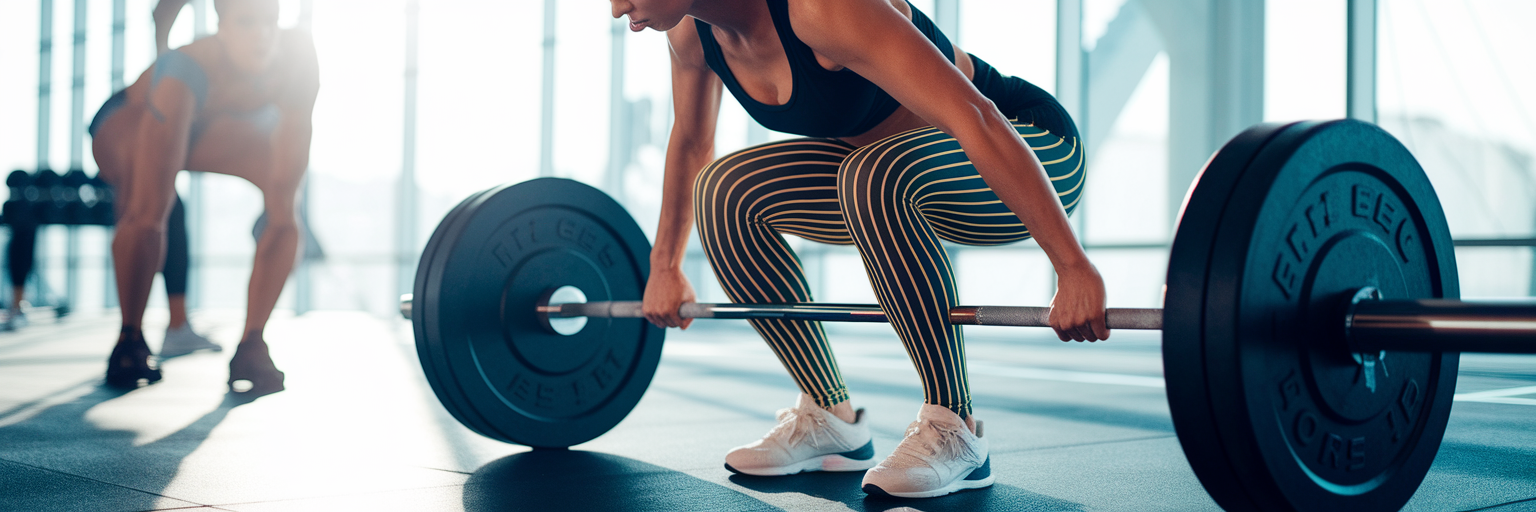Why Creatine Is a Game-Changer for Plant-Based Athletes
If you're a vegan athlete, you already know the dedication it takes to fuel your body for peak performance. But there's one tool you might be overlooking. Creatine is an organic compound that your body uses for energy, and it's found almost exclusively in meat and fish. This isn't a weakness of a plant-based diet, but a simple biological reality that presents a massive opportunity.
Because plant-based eaters naturally have lower creatine stores in their muscles, they often see more significant performance improvements from supplementation. Think of it as creating the optimal internal environment for your muscles to thrive. For creatine for vegan athletes, it’s not about getting a slight edge. It’s about ensuring your muscles have the fuel they need to match your hard work and ambition.
The benefits extend beyond the weight room. In fact, studies highlighted in publications like MDPI suggest that creatine supplementation can enhance cognitive function, a benefit especially relevant for athletes needing sharp focus during demanding training sessions. This added mental clarity can make a real difference when you're pushing for that final rep.
Supplementing with creatine helps you unlock your full potential for plant based muscle growth. It’s a straightforward way to support your strength goals. Now, let's get into the specifics of how this powerful tool works and how you can use it effectively. For more insights into optimizing your wellness journey, you can explore additional articles on our blog.
The Science of How Creatine Fuels Your Lifts

So, how does creatine actually help you lift heavier and push harder? The science is surprisingly simple when you break it down. Your muscles use a molecule called Adenosine Triphosphate, or ATP, as their primary source of explosive energy. Think of ATP as your phone's battery when you're running a power-intensive app. It drains very quickly during activities like sprinting or heavy lifting.
This is where creatine comes in. Your body stores creatine in your muscles as phosphocreatine, which acts like a rapid recharger. When you use up ATP, it becomes ADP (Adenosine Diphosphate), a "drained" energy molecule. Phosphocreatine swoops in and donates its phosphate group to ADP, instantly turning it back into the high-energy ATP. This rapid recycling process allows you to sustain high-intensity effort for longer, meaning you can squeeze out those extra one or two reps that truly stimulate muscle growth.
This isn't just theoretical. Studies reported by sources like The New York Times have found that athletes taking creatine can generate 5 to 15 percent more force. This process translates into real-world strength gains, a topic we explore further when discussing the overall creatine benefits. Over time, this enhanced work capacity signals your body to build more muscle, making it one of the most effective vegan strength training supplements available.
| Metric | Without Creatine Supplementation | With Saturated Creatine Stores |
|---|---|---|
| Warm-up Sets | 2 sets of 8-10 reps | 2 sets of 8-10 reps |
| Working Set 1 (at 85% 1RM) | 4-5 reps | 6-7 reps |
| Working Set 2 (at 85% 1RM) | 3-4 reps | 5-6 reps |
| Working Set 3 (at 85% 1RM) | 2-3 reps | 4-5 reps |
| Total Volume (Working Reps) | ~10 reps | ~17 reps |
This table illustrates the potential impact of saturated creatine stores on a single workout. The increased capacity for high-quality reps leads to greater training volume, a key driver for long-term muscle and strength gains. Figures are illustrative based on typical performance improvements.
Finding Your Optimal Creatine Dosage
Understanding how to take creatine is simple, and you have two main paths to choose from. The goal is to saturate your muscles with creatine, and consistency is the most important factor. Let's look at the common approaches.
The Optional 'Loading Phase'
A loading phase is designed to saturate your muscles as quickly as possible. This involves taking a higher dose for a short period.
- Dosage: 20-25 grams per day.
- Duration: 5-7 days.
- How: Split the total amount into 4-5 smaller doses (e.g., 5 grams each) throughout the day. This helps with absorption and minimizes any potential for stomach discomfort.
The 'Maintenance Phase' for the Long Haul
Once your muscles are saturated, you only need a smaller daily amount to keep them topped off. This is the maintenance phase.
- Dosage: 3-5 grams per day.
- Duration: Ongoing.
- How: Take your single dose at any time of day that is convenient for you.
To Load or Not to Load?
So, do you really need to do a loading phase? The short answer is no. It's completely optional. You can achieve the exact same muscle saturation by simply starting with the maintenance dose of 3-5 grams per day. The only difference is the timeline. It will take about three to four weeks to reach full saturation this way, compared to one week with loading. The choice is yours. If you're eager to feel the effects quickly, loading is a great option. If you prefer a simpler, more gradual approach, just stick with the maintenance dose from day one. The most important thing is to take the best creatine monohydrate consistently every single day, including on your rest days. If you have more questions about our supplements, our FAQ page is a great resource.
Perfecting Your Timing for Maximum Gains

One of the most common questions athletes ask is, "When is the best time to take my creatine?" You'll hear a lot of debate about pre-workout versus post-workout timing, but the science is starting to point toward a slight advantage for one over the other.
While taking creatine at any point in the day is effective, some research suggests that taking it after your workout might be slightly better. For instance, a 2022 study in Frontiers in Sports and Active Living suggests that taking creatine post-exercise might lead to slightly better muscle saturation. The theory is that after a workout, your muscles are more receptive to nutrients. Increased blood flow and heightened insulin sensitivity can help shuttle creatine into your muscle cells more efficiently.
To enhance this effect, you can pair your creatine with a source of carbohydrates and protein. This combination can stimulate an insulin response, which acts like a key to help unlock your muscle cells for better creatine uptake. Adding it to your post-workout protein shake is an easy and effective strategy.
Here are the key takeaways:
- Consistency is king: Taking creatine daily is far more important than the exact time you take it.
- Post-workout has a slight edge: Taking it after your training session may improve absorption.
- Pair it with carbs and protein: This can further enhance uptake into your muscles.
Ultimately, don't stress about perfect timing. The best time to take creatine is the time you'll remember to take it consistently. Find a routine that works for you and stick with it.
The Power Couple: Creatine and Vegan Protein
To truly maximize your efforts for plant based muscle growth, it helps to think of creatine and protein as a team. They have distinct but complementary roles in your body. Creatine provides the immediate energy for the "work" you do in the gym, allowing you to perform more intense reps and sets. It fuels the effort.
Vegan protein, on the other hand, provides the amino acids for the "growth" that happens afterward. When you train hard, you create tiny micro-tears in your muscle fibers. Protein delivers the essential building blocks your body needs to repair that damage and rebuild your muscles stronger and bigger than before. It fuels the recovery and adaptation.
By fueling harder workouts with creatine, you create a greater stimulus for muscle repair. Following that up with a high-quality vegan protein source gives your body exactly what it needs to meet that demand. This one-two punch creates an ideal environment for building strength and muscle. Excellent plant-based protein sources include pea, soy, and hemp. Not sure which plant protein is right for you? Check out our guide to the best protein powders.
Pairing your daily creatine with a high-quality protein, like our Chocolate Vegan Protein, gives your body everything it needs to repair and grow. This combination is a definitive strategy for any dedicated vegan athlete looking to build strength.
Safety, Expectations, and Final Thoughts
It's natural to have questions about any supplement, but you can feel confident with creatine. Creatine monohydrate is one of the most extensively studied and safest supplements on the market. Some people notice a slight increase in weight when they first start, but this is primarily water being drawn into your muscle cells, which is a positive sign of saturation.
To avoid any potential stomach upset, especially during a loading phase, simply split your daily amount into smaller doses and make sure you're drinking plenty of water. It's also important to have realistic expectations. Creatine is an amplifier of your hard work, not a replacement for it. Your results will always depend on consistent training and a solid nutrition plan.
If you're ready to support your strength goals, starting with a simple maintenance dose is a great way to begin. Ready to experience the benefits for yourself? You can find our pure Creatine Monohydrate here. If you found this guide helpful, please share it with a friend or teammate who could benefit!



